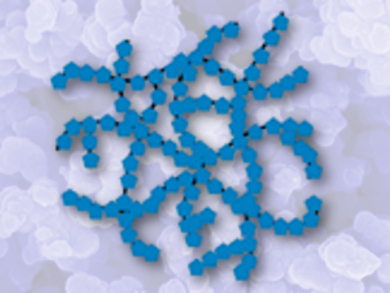Modern electronic devices are sensitive to electromagnetic interference. Usually, metal shielding, which reflects the electromagnetic radiation, is used to prevent these problems. A number of nanomaterials that can absorb electromagnetic waves instead of just reflecting them have been reported. Materials based on low-density reduced graphene oxide (RGO) have received some attention, as a low specific weight is a significant advantage. However, these materials are difficult to produce and purify and thus expensive.
Aming Xie, Fan Wu, Yuan Wang, PLA University of Science and Technology, Nanjing, China, and colleagues have synthesized an inexpensive 3D polypyrrole aerogel that serves as an electromagnetic absorber material. It was synthesized by mixing a solution of the pyrrole monomer in water/ethanol with anhydrous FeCl3. The pyrrole polymerized, forming a hydrogel that was subsequently dried for 12 hours at 50 °C. The resulting aerogel is a black, spongy material that can recover its original shape after compression and has a density of only 48 mg/cm3.
The team studied the electromagnetic absorbtion properties of the material and found that a composite of just 7 wt. % aerogel in paraffin and merely 2.5 mm thickness showed good absorption with an effective bandwidth of 6.2 GHz. The material thus shows potential as an inexpensive, lightweight, and wide-bandwidth electromagnetic absorber.
- Self-assembled ultralight three-dimensional polypyrrole aerogel for effective electromagnetic absorption,
Aming Xie, Fan Wu, Mengxiao Sun, Xiaoqing Dai, Zhuanghu Xu, Yanyu Qiu, Yuan Wang, Mingyang Wang,
Appl. Phys. Lett. 2015, 106, 222902.
DOI: 10.1063/1.4921180




